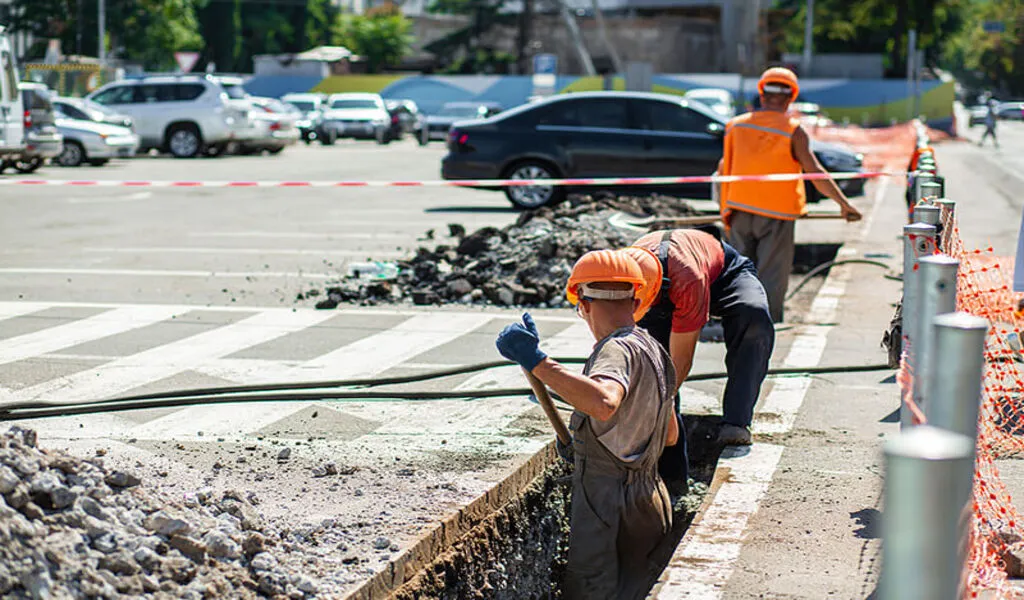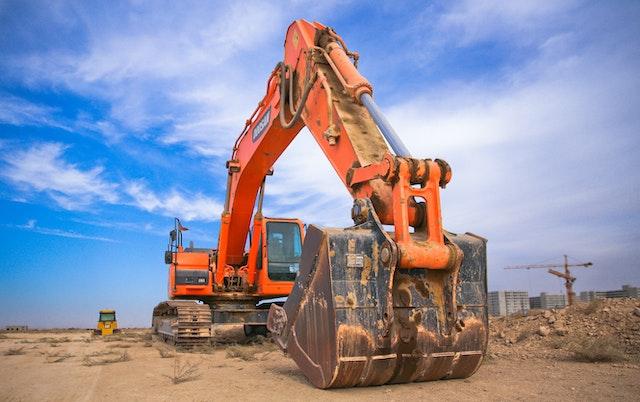Learning
What is the Difference Between a Trench and an Excavation?

When it comes to construction and digging projects, the terms trench and excavation are often used interchangeably. However, there are distinct differences between the two.
A trench is a narrow, long excavation that is deeper than it is wide. It is typically used for utilities such as pipes and cables, as well as for drainage systems. Excavation, on the other hand, refers to any type of digging or removal of earth or rock in order to create a hole or void.
While both trenches and excavations involve digging into the ground, their purposes and methods differ. Trenches are usually dug for specific purposes such as installation or repair work, with strict guidelines in place to ensure safety. Excavations can be more general and may involve larger-scale digging for foundations of buildings or landscaping projects.
Understanding these distinctions is crucial because it affects how these tasks are approached from a safety standpoint. Trenches require specific precautions due to their narrowness and depth; protective systems such as shoring must be implemented to prevent potential collapses. On the other hand, excavations generally necessitate proper planning based on soil conditions and project requirements in order to mitigate risks.
Purpose of a trench: utility installations, drainage
One of the main purposes of a trench is the installation of utilities. Trenches are often dug to run pipes, cables, and other utility lines underground. This allows for a more organized and efficient distribution of resources without cluttering the surface. The depth and width of a trench can vary depending on the specific utility being installed.
Another important purpose of trenches is drainage. Just like how ditches are strategically created to channel water away from roads or buildings, trenches play a crucial role in diverting excess water or providing proper drainage systems. By digging trenches with specific slopes and angles, it becomes easier to manage rainwater runoff, preventing flooding and potential damage to properties. A well-designed trench can efficiently transport water away from vulnerable areas and help maintain a stable environment.
In conclusion, while excavations may serve several purposes such as construction or archaeological exploration, trenches have their unique utility-focused functions.
They play an indispensable role in housing utilities underground while also ensuring effective drainage systems. Whether it’s managing piping networks or controlling water flow patterns, the purposefulness of trenches highlights their significant contribution to infrastructure development and maintenance.
Purpose of an excavation: construction projects, foundations
When it comes to construction projects and building foundations, the purpose of an excavation cannot be overstated. Excavation is not merely about digging a hole in the ground; it serves as the starting point for any construction endeavor.
The main difference between trench and excavation lies in their purpose. A trench is typically narrow and deep, dug specifically for purposes like laying pipes or cables, whereas an excavation refers to a broader and deeper area of soil removal necessary for constructing foundations.
The purpose of excavating for construction projects is two-fold: to ensure stability and provide sufficient space for the foundation. Stability is crucial when building anything substantial, whether it’s a family home or a high-rise tower.
An excavation provides stability by removing loose or unstable soil and creating a solid base that can support the weight of the structure above. Additionally, excavations allow enough space to pour concrete footings or lay other foundation materials that distribute and bear the load evenly, preventing potential settling or structural issues down the line.
Furthermore, another critical aspect overlooked by many is how excavations play a role in future maintenance work. By getting below ground level during initial construction phases, contractors have easier access to utilities like plumbing lines or electrical systems that may require repairs or upgrades later on.
This proactive approach saves time and money when compared to costly digging operations needed if these utility lines were buried too close to the surface without proper foresight during initial excavation.
Size and depth differences between trenches and excavations
When it comes to construction and excavation projects, it’s important to distinguish between trenches and excavations. While both involve digging into the ground, there are significant differences in size and depth that can impact the purpose and safety precautions required for each.
Trenches are typically narrower than excavations, often measuring less than 15 feet wide. Their primary purpose is to create a pathway for pipes, utility lines, or foundations.
Trenches tend to be deeper than they are wide, with depths ranging from a few feet up to 20 feet or more. These dimensions make trenches well-suited for specific tasks that require precision or space limitations.
On the other hand, excavations are generally larger in size compared to trenches. They typically encompass areas where soil removal is necessary on a larger scale, such as when building foundations or basement floors need to be constructed at greater depths. Excavations have wider dimensions that accommodate heavy machinery needed for earthmoving purposes.
The differences in size and depth between trenches and excavations have important implications for safety measures as well. Due to their narrower width, trenches may require extra caution when working within them because of their potential instability and risk of collapse. Special shoring techniques and protective systems may need to be employed when working inside trenches exceeding certain depths.
In contrast, deeper excavations entail additional hazards due not only to increased depth but also the wider area involved. The use of heavy equipment brings its own set of risks when operating within large-scale excavations.
Safety considerations for both trenches and excavations
When it comes to working in trenches and excavations, safety should always be the top priority. These are high-risk areas that require careful planning and adherence to safety protocols. One important consideration is the stability of the soil.
A properly designed excavation should have sloping or shoring systems in place to prevent cave-ins, as loose or unstable soil can collapse without warning, leading to serious injuries or fatalities. Regular inspections of the trench walls and proper documentation of any changes in soil conditions can help mitigate this risk.
Another crucial aspect is ensuring adequate ventilation within trenches and excavations. Without proper airflow, workers may be exposed to dangerous gases such as carbon monoxide or hydrogen sulfide, which can accumulate quickly in confined spaces like these. Ventilation equipment such as fans or blowers should be used consistently during work operations to maintain air quality and minimize health risks.
It’s necessary to consider the proximity of utilities when working on trenches or excavations. Underground cables, gas lines, water pipes, and other utilities pose significant hazards if damaged accidentally by digging machinery or tools.
To mitigate this risk, a utility locating service should be engaged before starting any excavation work. This service will accurately mark out all underground utilities so that workers can safely avoid them while carrying out their tasks.
Equipment used in trenches and excavations
One of the most essential parts of any trench or excavation project is the equipment used. These tools not only determine the efficiency and safety of the operation, but also play a crucial role in ensuring that the job gets done effectively.
One key piece of equipment used in trenches and excavations is the shoring system. This consists of various components such as vertical supports, horizontal struts, and hydraulic jacks that help prevent cave-ins and provide stability to the sides of the trench or excavation.
Another important tool commonly used in trenches and excavations is a backhoe or an excavator. These heavy-duty machines are designed to dig deep into the ground, allowing for efficient removal of soil and rocks.
With their powerful hydraulic systems, they can scoop up large quantities of material at once and deposit them in dump trucks for transportation away from the site. The use of backhoes or excavators not only speeds up the excavation process but also minimizes manual labor required on site.
In addition to shoring systems and digging machinery, another crucial piece of equipment used in trenches and excavations is personal protective gear (PPG). This includes hard hats, safety goggles, high-visibility vests, steel-toe boots, gloves, ear protection devices, etc.
PPG is vital for ensuring worker safety by protecting against potential hazards such as falling debris or objects, respiratory issues due to dust inhalation, hearing damage from loud machinery noise, slips/trips/falls on uneven surfaces or wet conditions. Proper use of PPG not only helps prevent accidents and injuries but also promotes a culture of safety on the worksite.
SEE ALSO: Exploring Code Culture and Web Development in Thailand





























